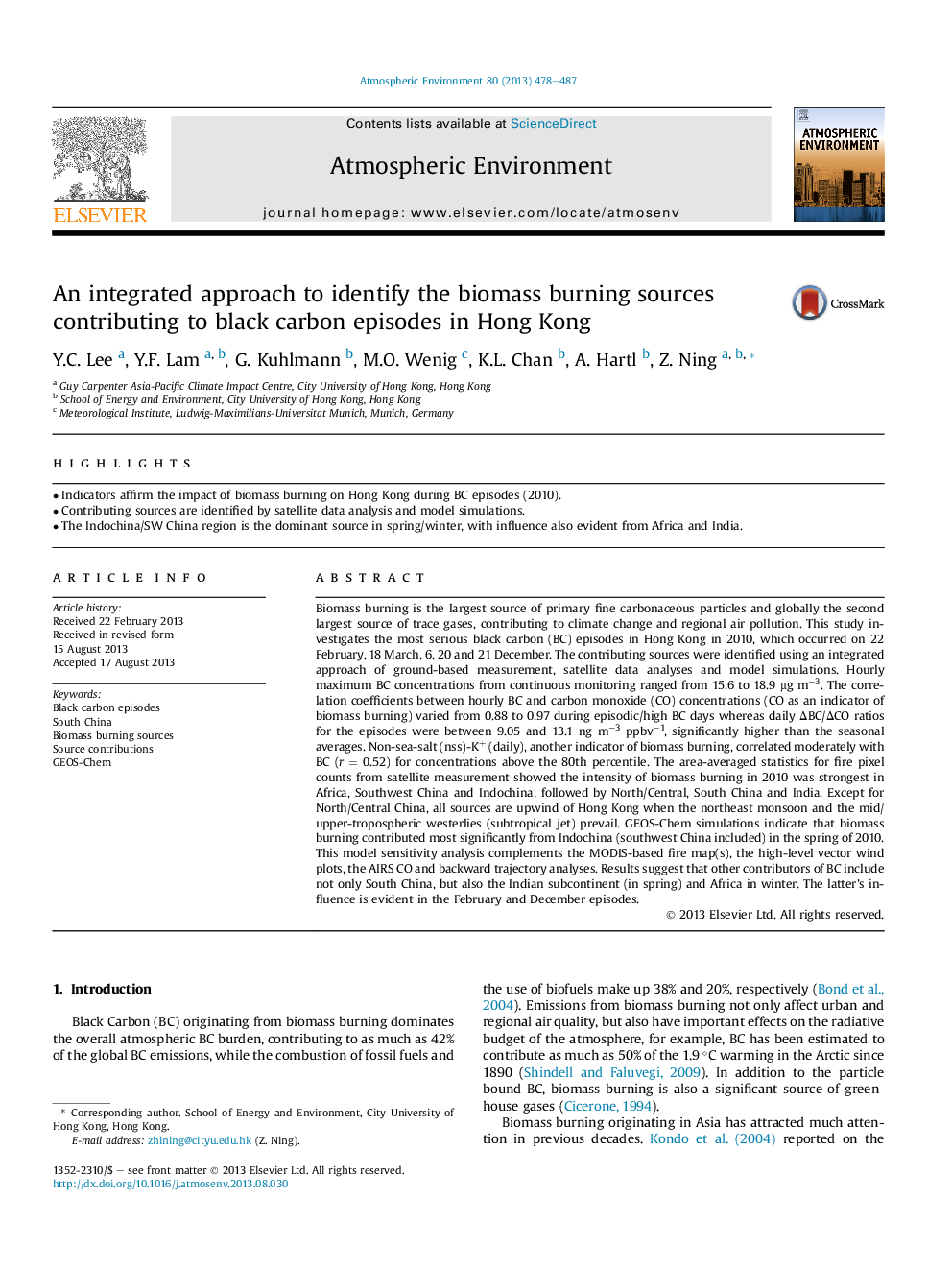| Article ID | Journal | Published Year | Pages | File Type |
|---|---|---|---|---|
| 6340706 | Atmospheric Environment | 2013 | 10 Pages |
Abstract
Biomass burning is the largest source of primary fine carbonaceous particles and globally the second largest source of trace gases, contributing to climate change and regional air pollution. This study investigates the most serious black carbon (BC) episodes in Hong Kong in 2010, which occurred on 22 February, 18 March, 6, 20 and 21 December. The contributing sources were identified using an integrated approach of ground-based measurement, satellite data analyses and model simulations. Hourly maximum BC concentrations from continuous monitoring ranged from 15.6 to 18.9 μg mâ3. The correlation coefficients between hourly BC and carbon monoxide (CO) concentrations (CO as an indicator of biomass burning) varied from 0.88 to 0.97 during episodic/high BC days whereas daily ÎBC/ÎCO ratios for the episodes were between 9.05 and 13.1 ng mâ3 ppbvâ1, significantly higher than the seasonal averages. Non-sea-salt (nss)-K+ (daily), another indicator of biomass burning, correlated moderately with BC (r = 0.52) for concentrations above the 80th percentile. The area-averaged statistics for fire pixel counts from satellite measurement showed the intensity of biomass burning in 2010 was strongest in Africa, Southwest China and Indochina, followed by North/Central, South China and India. Except for North/Central China, all sources are upwind of Hong Kong when the northeast monsoon and the mid/upper-tropospheric westerlies (subtropical jet) prevail. GEOS-Chem simulations indicate that biomass burning contributed most significantly from Indochina (southwest China included) in the spring of 2010. This model sensitivity analysis complements the MODIS-based fire map(s), the high-level vector wind plots, the AIRS CO and backward trajectory analyses. Results suggest that other contributors of BC include not only South China, but also the Indian subcontinent (in spring) and Africa in winter. The latter's influence is evident in the February and December episodes.
Related Topics
Physical Sciences and Engineering
Earth and Planetary Sciences
Atmospheric Science
Authors
Y.C. Lee, Y.F. Lam, G. Kuhlmann, M.O. Wenig, K.L. Chan, A. Hartl, Z. Ning,
